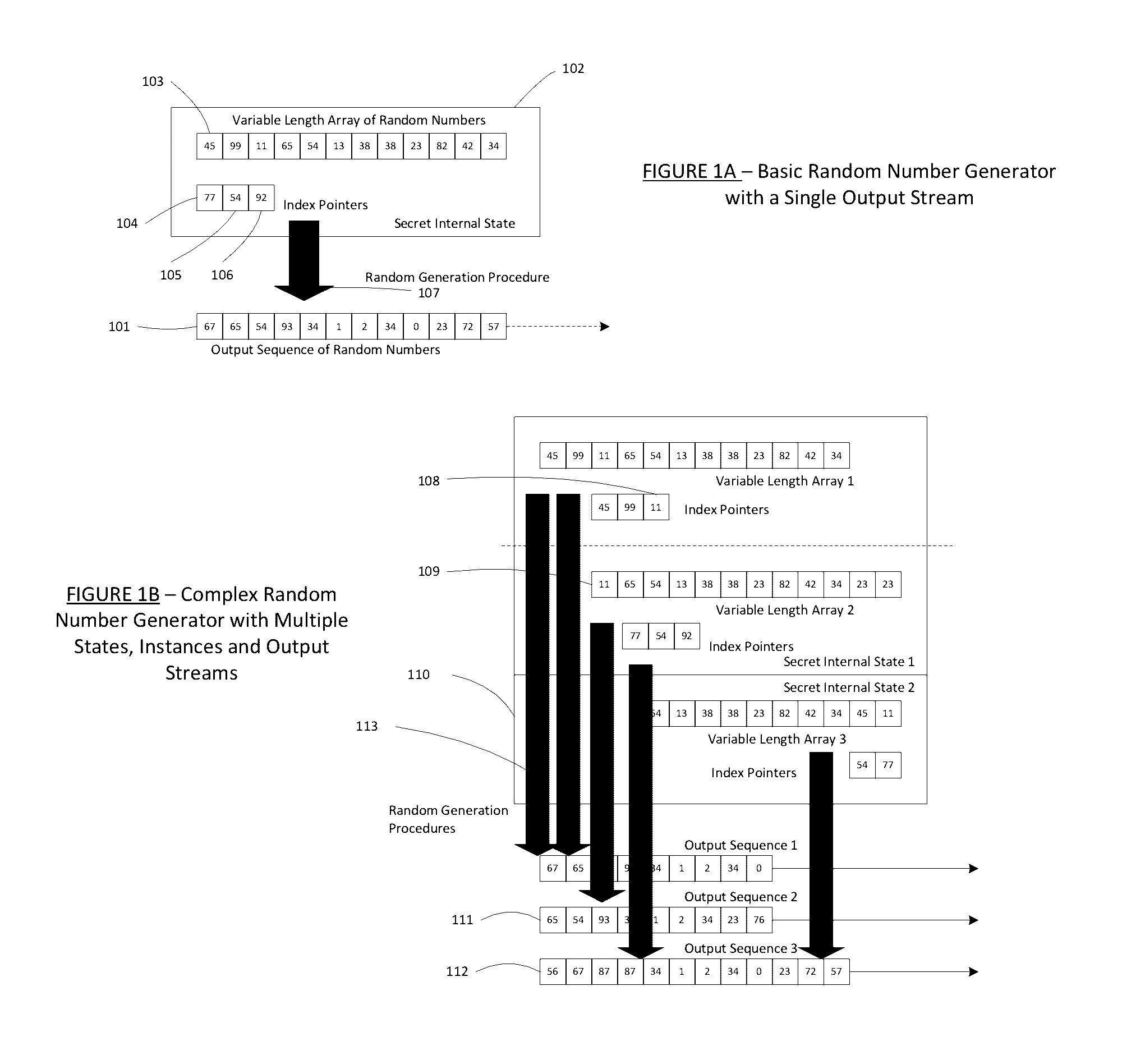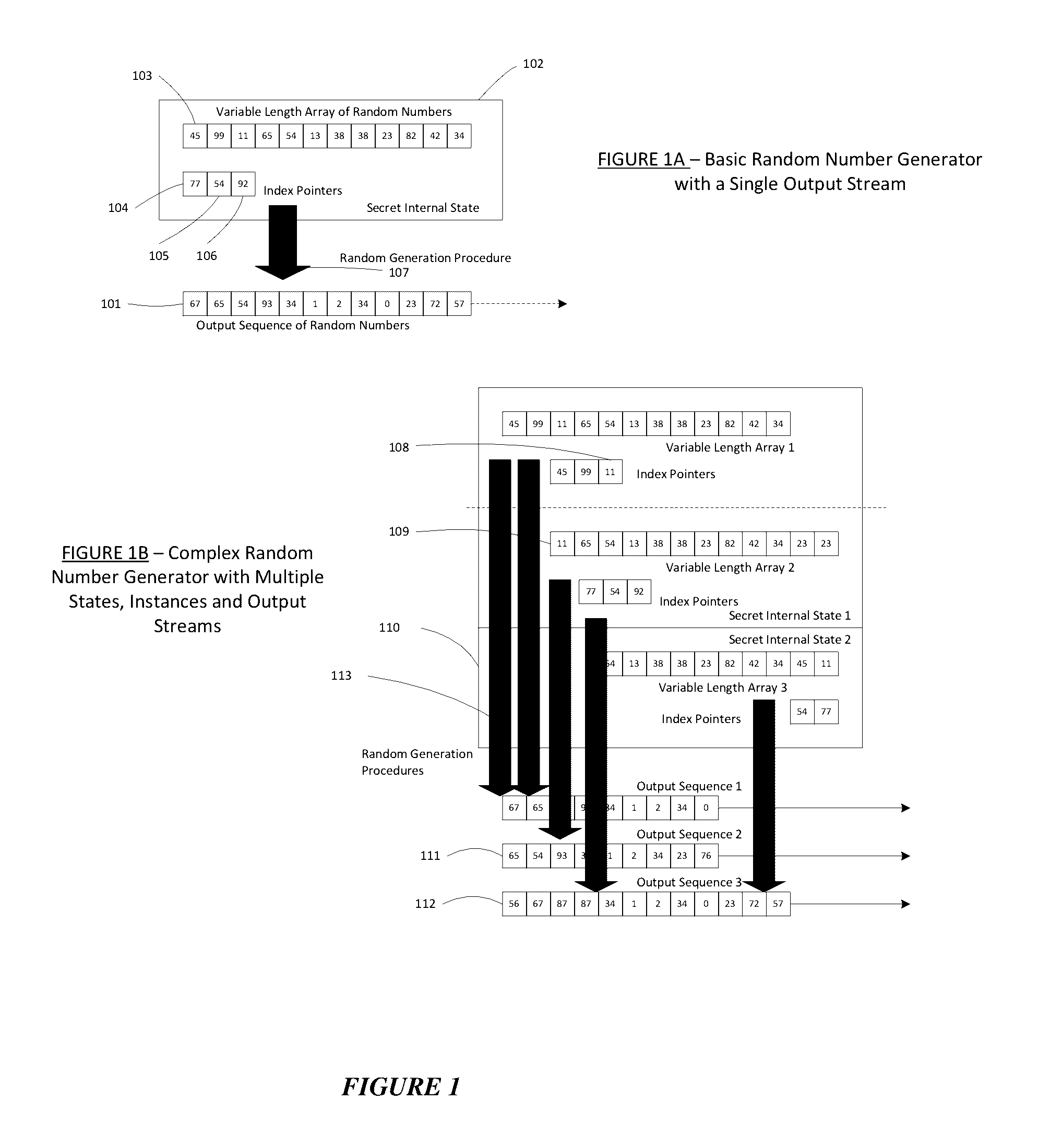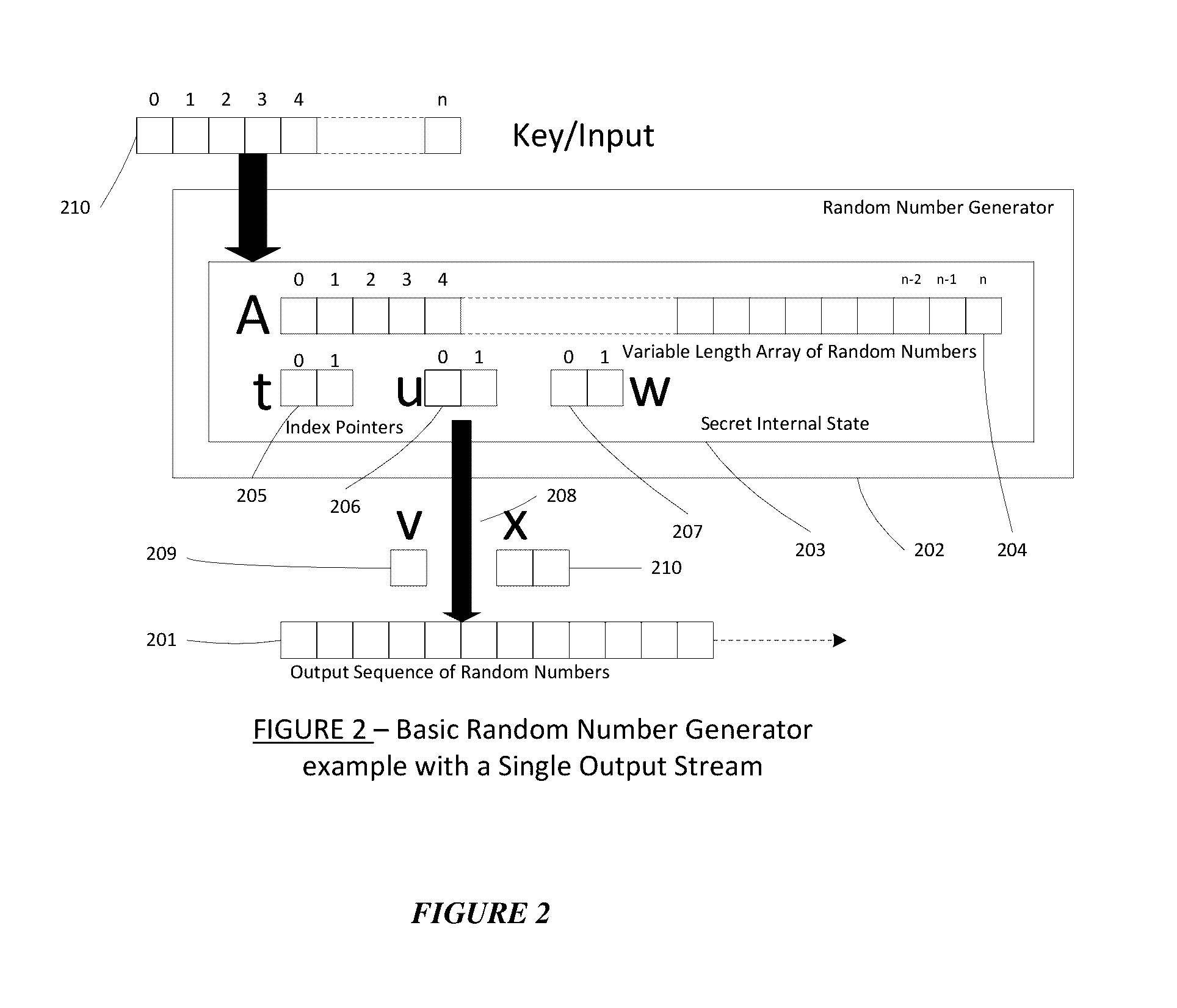Method for a Dynamic Perpetual Encryption Cryptosystem
a cryptosystem and perpetual encryption technology, applied in the field of data transmission and computer security systems, can solve the problems of otps not being widely applied, and never achieving perfect secrecy using block cyphers or seed-fed stream ciphers
- Summary
- Abstract
- Description
- Claims
- Application Information
AI Technical Summary
Benefits of technology
Problems solved by technology
Method used
Image
Examples
Embodiment Construction
Terms and Definitions
[0056]Some embodiments described herein are associated with “encryption” and “decryption”. As used herein, the phrase “encryption” is the process of encoding or transforming messages or information in such a way that only authorized parties can transform it into a meaningful message. Encryption does not prevent interception, but denies the message content to the interceptor (as published by Goldreich, Oded “Foundations of Cryptography: Vol 2, Basic Applications. Vol. 2”, Cambridge University Press, 2004). In an encryption scheme, the message or information, referred to as “plaintext” is encrypted using an encryption algorithm, producing “ciphertext” that can only be read if decrypted. For technical reasons, the security of encryption schemes are usually dependent on true random or pseudo-random encryption keys generated by an algorithm. It is in principle possible to decrypt the message without possessing the key, but, for a well-designed encryption scheme, even...
PUM
 Login to View More
Login to View More Abstract
Description
Claims
Application Information
 Login to View More
Login to View More - R&D
- Intellectual Property
- Life Sciences
- Materials
- Tech Scout
- Unparalleled Data Quality
- Higher Quality Content
- 60% Fewer Hallucinations
Browse by: Latest US Patents, China's latest patents, Technical Efficacy Thesaurus, Application Domain, Technology Topic, Popular Technical Reports.
© 2025 PatSnap. All rights reserved.Legal|Privacy policy|Modern Slavery Act Transparency Statement|Sitemap|About US| Contact US: help@patsnap.com



